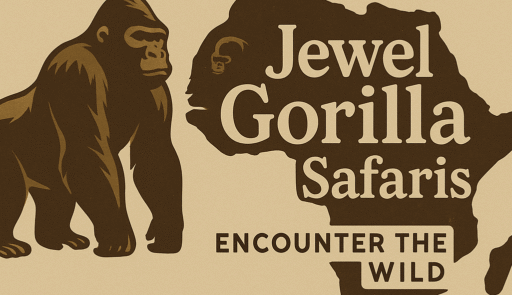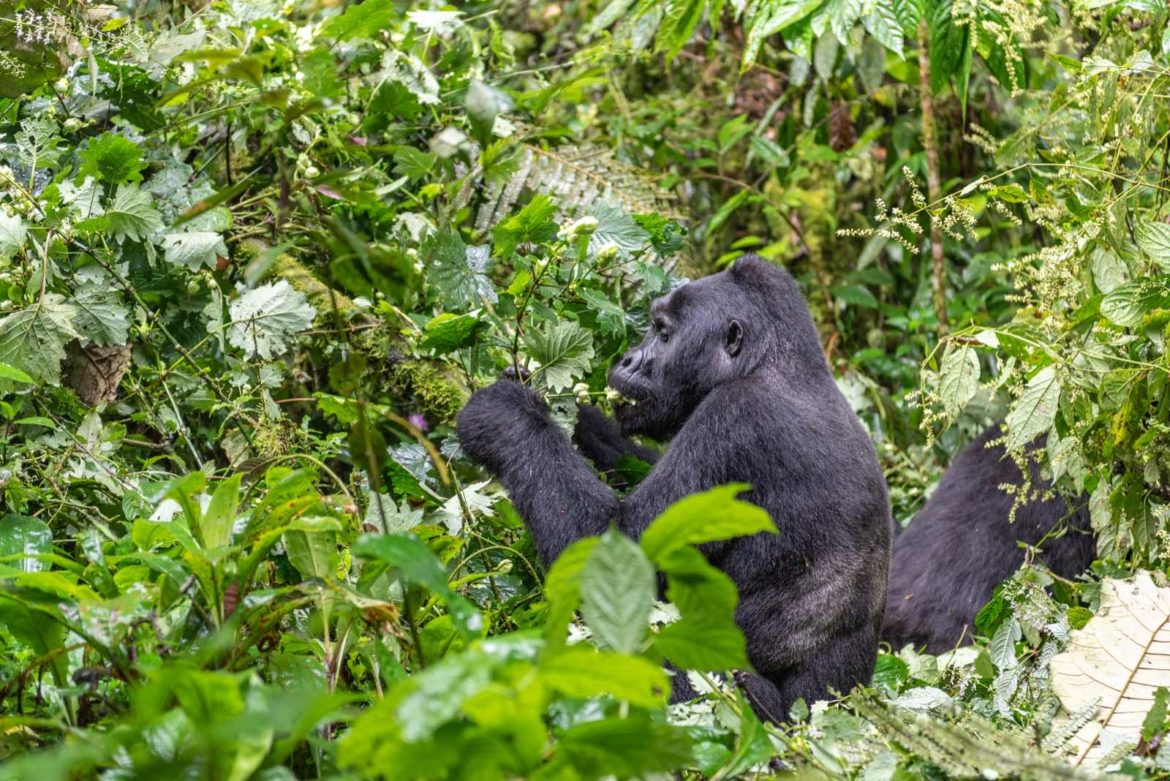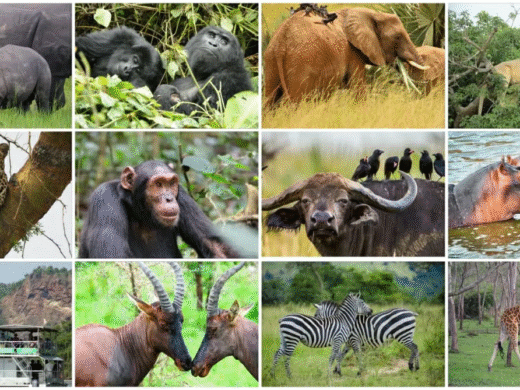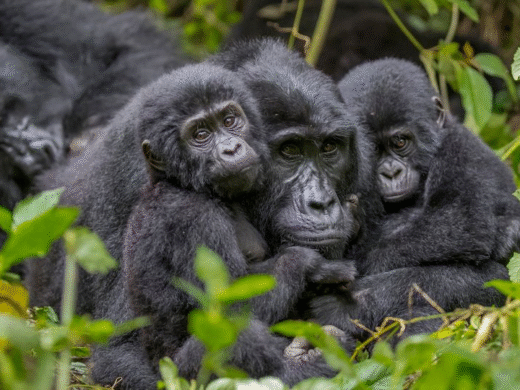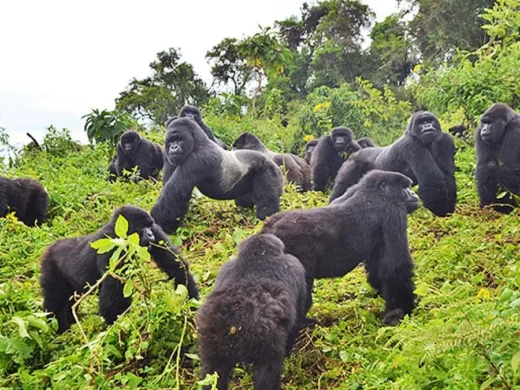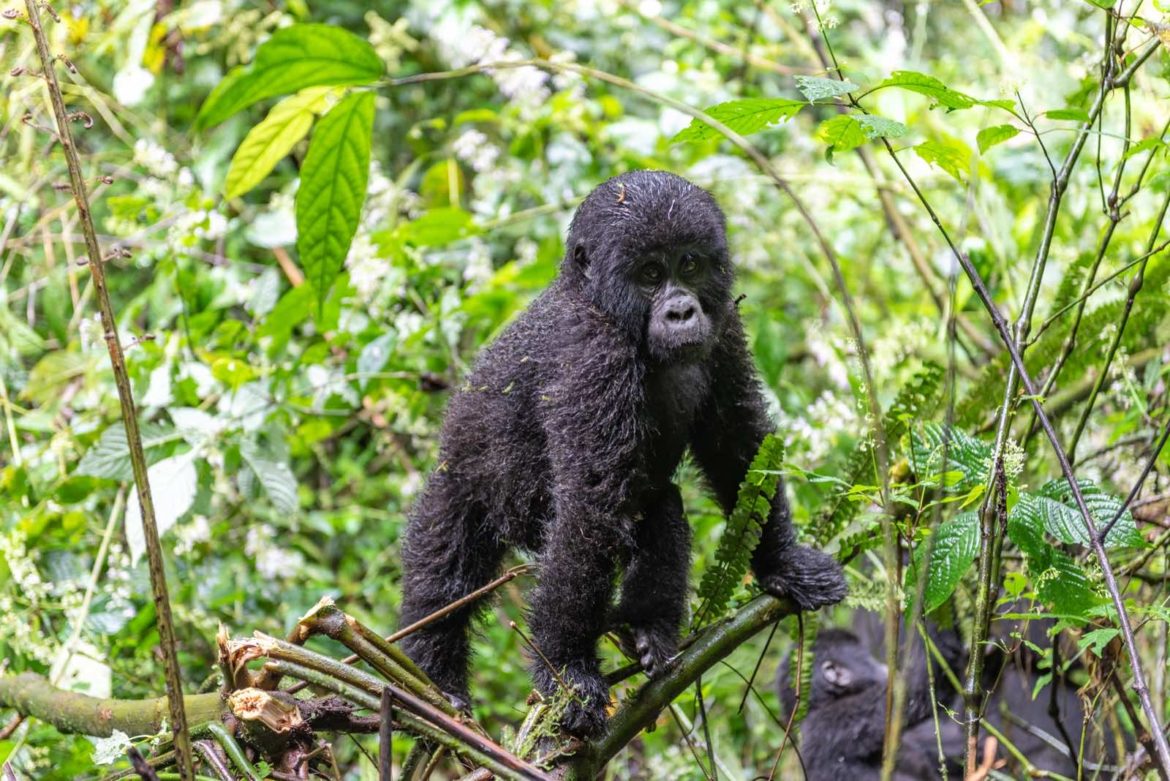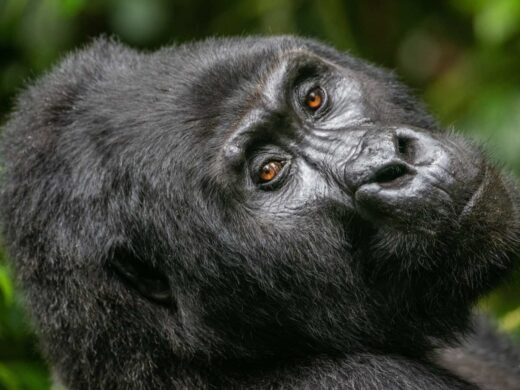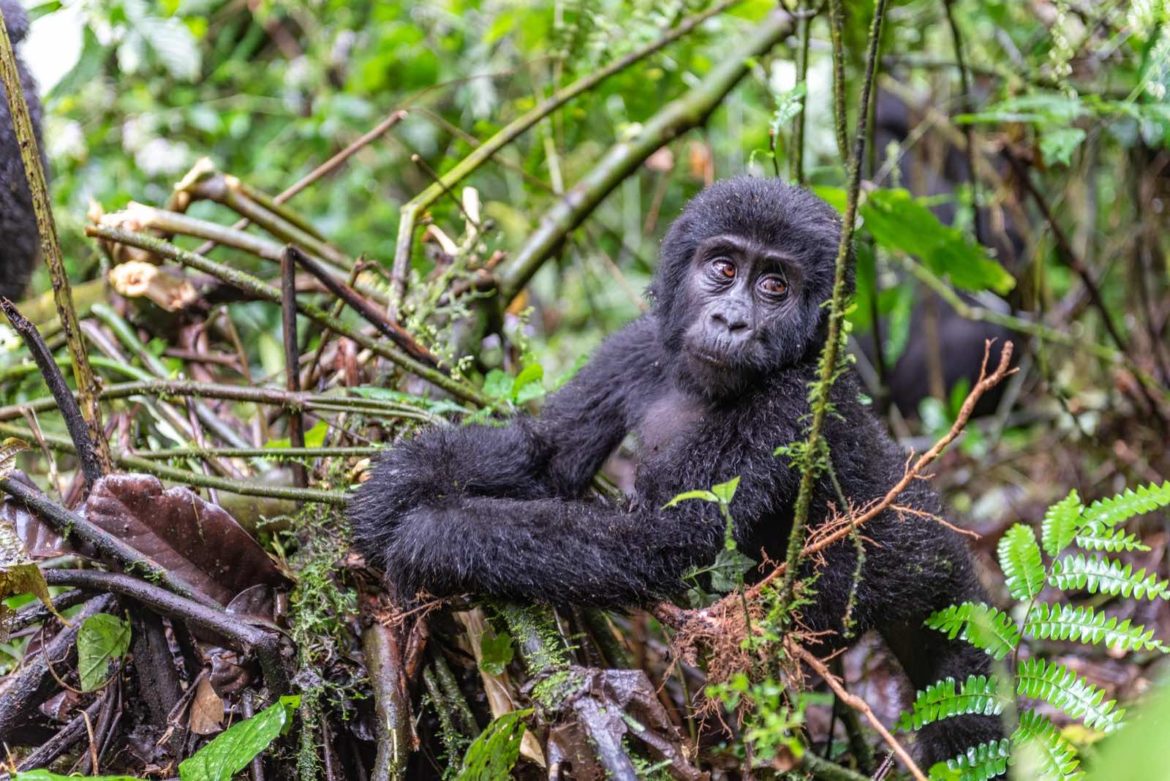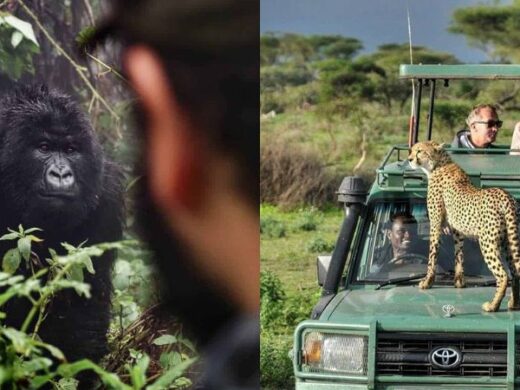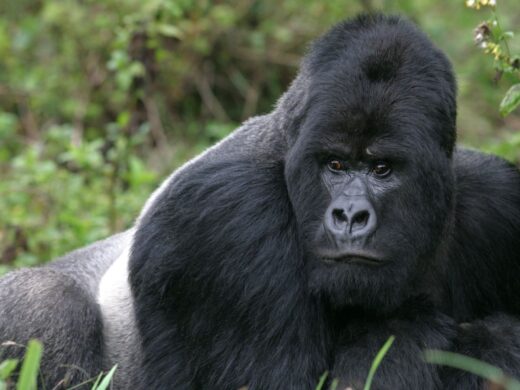Why Choose Uganda for Gorilla Trekking?
Uganda is not just a destination — it’s the heartland of mountain gorilla trekking in Africa. With more than half of the world’s remaining mountain gorillas living within its borders, Uganda offers the most authentic, raw, and immersive gorilla safari experiences available anywhere on the continent.
Whether you’re a first-time explorer or a seasoned traveler, trekking gorillas in Uganda gives you a chance to walk through ancient rainforests, meet habituated gorilla families face-to-face, and contribute directly to their protection. Unlike more commercialized experiences elsewhere, Uganda’s treks are personal, ethical, and deeply moving.
What makes Uganda stand out for gorilla trekking?
Home to Two Premier Parks: Uganda boasts both Bwindi Impenetrable National Park, a UNESCO World Heritage Site, and Mgahinga Gorilla National Park, a quieter but equally rewarding trekking destination.
Affordable Gorilla Permits: At $800 per permit, Uganda offers the best value for travelers seeking a genuine encounter without compromising the experience.
Gorilla Habituation Experience: Uganda is the only country where you can spend up to 4 hours with a gorilla family under the Gorilla Habituation program — ideal for photographers and deep nature lovers.
Diverse Landscapes: Trek through misty jungles, meet local communities, and explore scenic regions like Lake Bunyonyi — all within reach of the gorilla parks.
Whether you’re entering through Entebbe International Airport or crossing from Kigali, Rwanda, Uganda makes logistics easy and rewarding. And with Jewel Gorilla Safaris — a fully licensed and locally rooted company — you’re guaranteed the best Uganda gorilla trekking safari tailored to your pace, comfort, and budget.
Gorilla Safari Packages in Uganda
At Jewel Gorilla Safaris, we’ve designed a range of Uganda Gorilla Safari packages to suit every type of traveler — from short 3-day getaways to immersive 8-day wildlife and culture adventures. All our safaris are led by professional local guides, include fully booked gorilla permits, and can start from either Entebbe or
for your convenience.
Explore our most popular Uganda gorilla trekking packages below:
Featured Uganda Gorilla Safari Packages
| Package | Duration | Main Destinations | Highlights | Start From | Request |
|---|
| 3 Days Budget Gorilla Trekking Safari | 3 Days | Bwindi Impenetrable Forest | Short & affordable trek from Kigali | $1,299 | Request Quote |
| 4 Days Uganda Gorilla & Lake Bunyonyi | 4 Days | Bwindi, Lake Bunyonyi | Trek gorillas + relax at the lake | $1,620 | Request Quote |
| 5 Days Family Gorilla Safari | 5 Days | Bwindi, Lake Bunyonyi | Kid-friendly trek & canoe tour | $2,470 | Request Quote |
| 6 Days Gorilla & Chimpanzee Safari | 6 Days | Bwindi, Kibale, Queen Elizabeth | Trek chimps & gorillas, see wildlife | $2,806 | Request Quote |
| 8 Days Uganda Wildlife & Gorilla Safari | 8 Days | Bwindi, Queen Elizabeth, Lake Bunyonyi | Big 5 game drives + gorilla trekking | $3,663 | Request Quote |
These itineraries can be customized for private trips, group joining safaris, or luxury fly-in experiences. Not sure which one suits you best? Let our experts help:
Request a Custom Uganda Safari Quote
Top Gorilla Trekking Destinations in Uganda
Uganda is blessed with two spectacular gorilla trekking destinations: Bwindi Impenetrable National Park and Mgahinga Gorilla National Park. These lush, mountainous forests are home to more than half of the world’s remaining mountain gorillas, making Uganda one of the best places for gorilla trekking in Africa.
Bwindi Impenetrable National Park
Bwindi is the most popular gorilla trekking destination in Uganda, and for good reason. This UNESCO World Heritage Site boasts

Whether you’re a solo traveler or in a group, Bwindi offers a powerful and deeply moving gorilla trekking experience — with treks ranging from 2 to 8 hours depending on the location of the gorillas.
Why Choose Bwindi?
Highest number of gorilla families in Uganda
Option for Gorilla Habituation Experience (spend 4 hours with gorillas)
Great lodges from budget to luxury
Accessible from both Entebbe and Kigali
Mgahinga Gorilla National Park
Mgahinga, located in the Virunga Volcanoes range, is Uganda’s smallest park — but offers a quieter, less crowded gorilla trekking option. With only one habituated family, Nyakagezi, your chances of getting an exclusive encounter are very high.

Why Trek in Mgahinga?
Fewer tourists, more intimate treks
Stunning views of the Virunga volcanoes
Ideal for combining golden monkey tracking and volcano hiking
Easily accessible from Kisoro and Rwanda’s border
Still Not Sure Which Park to Choose?
We’ll help you decide based on:
Availability of gorilla permits
Your travel dates
Your fitness level and interests
Whether you’re entering from Entebbe or Kigali
Why Choose Uganda for Gorilla Trekking?
When it comes to gorilla trekking in Africa, Uganda stands out as the most rewarding and accessible destination for travelers seeking an authentic, ethical, and budget-friendly experience. Whether you are a backpacker on a tight budget or a luxury traveler, Uganda offers unmatched opportunities to trek endangered mountain gorillas in their natural habitat.
Uganda Offers the Best Value for Gorilla Permits
Uganda’s gorilla permits cost $800 per person — significantly cheaper than Rwanda’s $1,500 permits, making Uganda the best country for affordable gorilla trekking without compromising the experience. You still get the same magical, close-up hour with a habituated gorilla family.
Two Unique National Parks to Choose From
Uganda is the only country that offers two gorilla trekking destinations:
Bwindi Impenetrable National Park with the highest number of gorilla families
Mgahinga Gorilla National Park for quiet, scenic, off-the-beaten-path treks
This gives you flexibility and variety — and higher chances of securing a permit even during peak season.
Exclusive Gorilla Habituation Experience
Uganda is the only destination where travelers can participate in the Gorilla Habituation Experience, allowing up to four hours with a semi-habituated gorilla family in the wild. This is ideal for photographers, filmmakers, and those seeking a deeper connection with these gentle giants.
Easy Access from Kigali and Entebbe
Travelers can fly into either Entebbe International Airport in Uganda or Kigali International Airport in Rwanda and cross into Uganda by road. This flexibility makes Uganda a perfect choice for short, mid-range, or extended safari holidays.
More Than Just Gorillas
Uganda offers so much more than just gorilla trekking. Combine your safari with:
This makes Uganda ideal for a comprehensive primate and wildlife safari experience.
Expert Local Operators
When you book with Jewel Gorilla Safaris, a sub-brand of Nextgen Safaris, you’re supporting a fully licensed, local Ugandan company. Our on-ground knowledge, strong community connections, and ethical approach ensure that your gorilla safari is safe, enriching, and unforgettable.
How to Book a Uganda Gorilla Safari
Booking a gorilla trekking safari in Uganda may seem overwhelming at first — with permits, transport, accommodation, and timing to consider. But with the right guidance, it’s a smooth and exciting process. At Jewel Gorilla Safaris, we simplify everything for you and customize the experience based on your travel style and budget.
Step 1: Choose Your Preferred Dates
Gorilla permits are limited and sell out quickly — especially during peak months like June to September and December to February. Start by identifying your ideal travel window. If you’re flexible, we can help you pick dates with permit availability and fewer crowds.
Step 2: Select Your Trekking Destination
Uganda has two gorilla trekking parks:
Bwindi Impenetrable National Park – More gorilla families, wider accommodation options
Mgahinga Gorilla National Park – Quieter, scenic, and ideal for golden monkey add-ons
We’ll guide you on the best option based on logistics, permit access, and your route (e.g., from Entebbe or Kigali).
Step 3: Let Us Secure Your Gorilla Permit
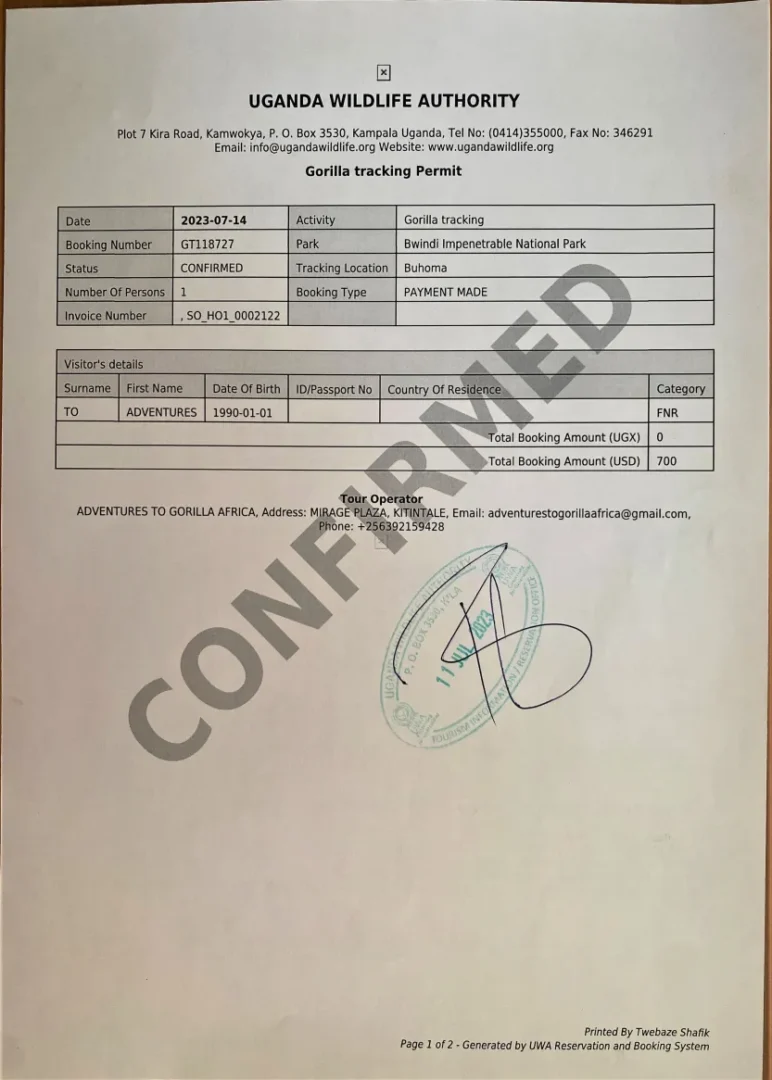
A gorilla trekking permit in Uganda costs $800 per person. You cannot trek gorillas without this permit. Once you confirm your travel dates, we immediately reserve your permits through the Uganda Wildlife Authority (UWA) and send you the receipt.
Step 4: Choose Your Accommodation Level
We offer a wide selection of budget, midrange, and luxury lodges in all gorilla trekking sectors — Buhoma, Rushaga, Ruhija, and Nkuringo — as well as near Mgahinga. Your choice of lodge may influence which gorilla family you’ll visit, as trekking begins from different trailheads.
Step 5: Plan Your Transport
We organize private or group road transfers from:
You can also request domestic flights to Kihihi or Kisoro airstrips for quicker access.
Step 6: Finalize and Pay
Once your itinerary is ready, we share an official invoice. We accept bank transfers, credit cards, or secure online payments. Upon payment, we confirm all arrangements and send you a detailed pre-departure guide.
Step 7: Travel, Trek & Enjoy
Arrive in Uganda and let our expert local guides take care of everything. From airport pickup to gorilla trekking, cultural interactions, and lodging — you’ll be in good hands with Jewel Gorilla Safaris.
Need Help Planning?
Our team is available daily to answer all your questions and help you build a gorilla trekking tour tailored to your needs.
Contact Us Now for a free quote or consultation.
Gorilla Permits: Prices, Rules, and How to Get One
A gorilla permit is your official ticket to trek mountain gorillas in Uganda’s Bwindi Forest or Mgahinga parks. It is issued by the Uganda Wildlife Authority (UWA) and must be secured in advance due to limited daily availability. Permits are mandatory — no traveler can see gorillas without one.
Uganda Gorilla Permit Price
As of now, the official cost of a gorilla trekking permit in Uganda is:
$800 per person for Foreign Non-Residents (FNR)
$700 for Foreign Residents (FR)
300,000 UGX for East African Citizens
These prices apply to both Bwindi Impenetrable National Park and Mgahinga Gorilla National Park.
For those seeking an extended experience, Uganda also offers the Gorilla Habituation Experience at:
What’s Included in the Gorilla Permit?
Every standard Uganda gorilla permit includes:
A 1-hour guided visit with a mountain gorilla family
Professional UWA ranger guides
Park entry fees for the day
A security escort in the forest
Note: Transportation, lodging, and meals are not included and must be arranged separately — which is where Jewel Gorilla Safaris comes in.
How to Get a Gorilla Permit in Uganda
The easiest and most reliable way to secure your permit is through a licensed tour operator like Jewel Gorilla Safaris. Here’s how it works:
You choose your dates and park (Bwindi or Mgahinga)
We check real-time availability with UWA
Once confirmed, we reserve the permits in your name
You receive an official receipt from Uganda Wildlife Authority
Permits can also be bought directly through UWA, but it is often difficult due to limited slots and high demand. Tour operators get priority access and can help you plan your full safari around permit availability.
Important Gorilla Permit Rules
To protect the endangered mountain gorillas and ensure guest safety, the following permit rules apply:
Only 8 people can visit a gorilla family per day
Visitors must be 15 years or older
No refunds are given for no-shows or illness, unless approved by UWA
You may not trek if you have flu, cough, or contagious illness
Permits are non-transferable to other dates unless UWA authorizes
When to Book Your Permit
Permits often sell out 6–12 months in advance, especially in high season (June to September, December to February). Early booking is highly recommended to avoid disappointment.
Need Help?
We offer fast and guaranteed gorilla permit booking as part of every safari package.
Request Your Permit Now or ask us which sectors are still available.
What to Expect on a Gorilla Trek in Uganda
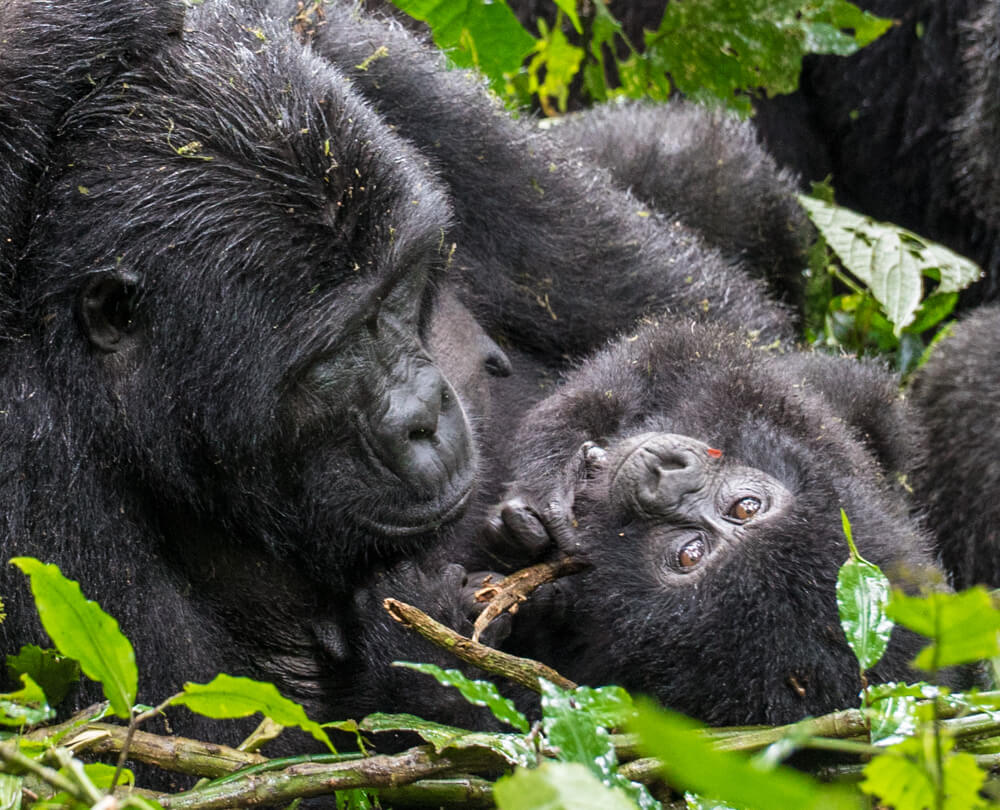
Gorilla trekking in Uganda is not a simple walk in the park — it’s a thrilling, emotional, and once-in-a-lifetime experience that begins long before you set foot in the forest. If you’re wondering what the actual trek feels like, here’s a step-by-step guide to help you prepare for the day.
Early Morning Briefing
Your gorilla trekking day starts early, typically around 7:00 AM. After breakfast, your driver transfers you to the park headquarters (Buhoma, Ruhija, Rushaga, Nkuringo, or Ntebeko for Mgahinga), where you’ll join other trekkers for a mandatory pre-trek briefing by UWA rangers.
You’ll be assigned to a specific gorilla family and grouped with up to 7 other trekkers. The rangers explain the rules, behaviors to expect from the gorillas, trekking safety, and how to behave during the encounter.
Into the Jungle
Once the groups are formed, you’ll begin the trek into the forest. This part is unpredictable — the duration can range from 1 to 6 hours, depending on the location of the gorilla family you’re tracking. The terrain may include dense vegetation, steep slopes, slippery paths, and high humidity. But the journey is part of the adventure.
Expect:
Thick foliage and uneven ground — a walking stick (provided) helps greatly.
Frequent water breaks — hydration is crucial.
Guidance by rangers and trackers, who are in constant radio contact with earlier trackers already monitoring gorilla movements.
The Moment You Find the Gorillas
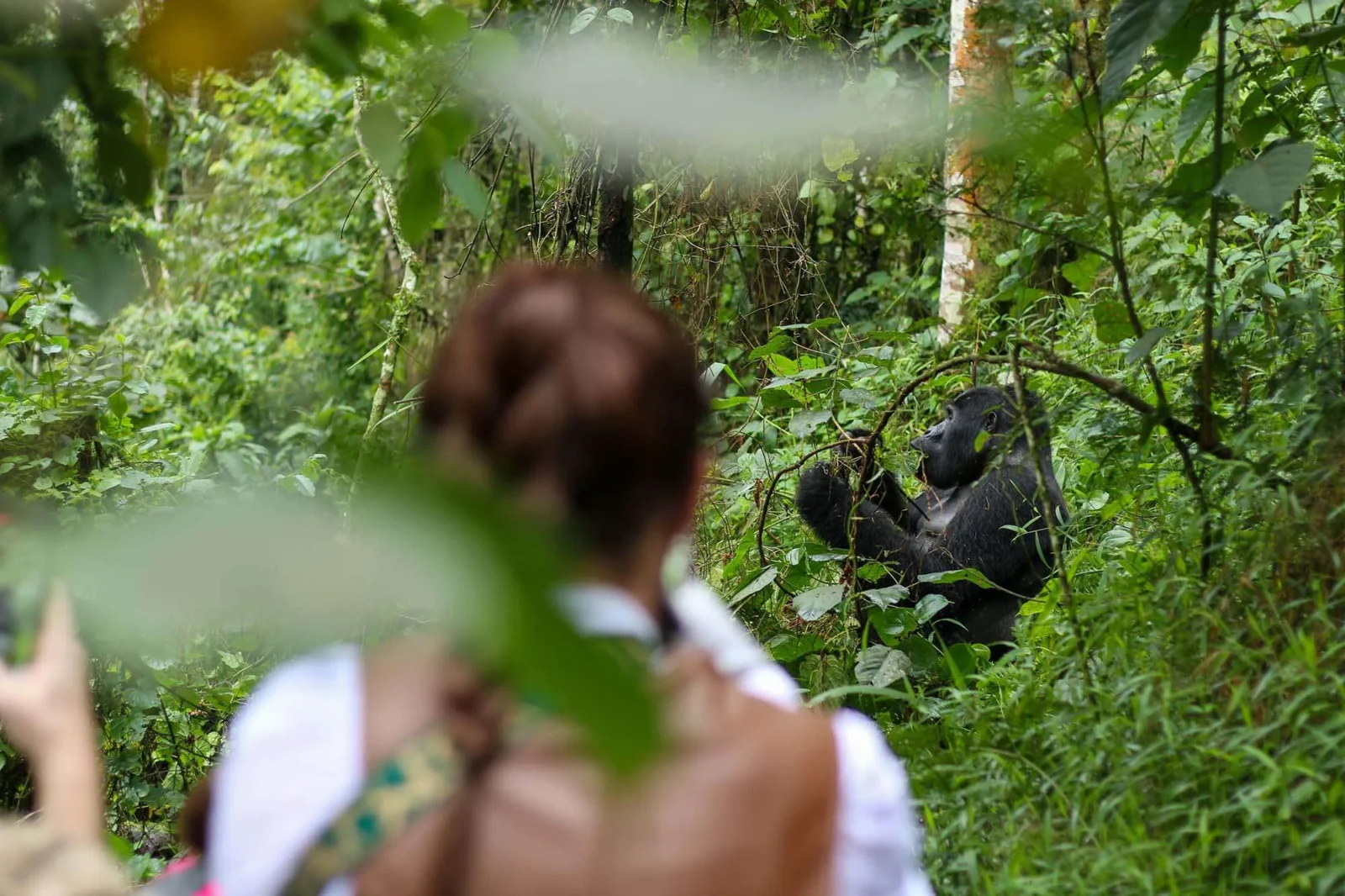
Once your group locates the gorillas, the rangers will signal for silence. You’ll leave your bags with the porters and approach the gorilla family slowly and calmly.
You are then allowed to spend up to 1 hour with them — a moment many travelers describe as life-changing.
During this hour, you can:
Watch gorillas eat, play, rest, and interact
Take photos and videos (without flash)
Observe the silverback as he watches over his family
Get as close as 7 meters, though gorillas sometimes get much nearer on their own terms
This is not a zoo experience — it’s raw, real, and humbling. You’ll feel their presence, power, and gentleness up close.
After the Trek
Once your time is up, the rangers guide you back to the park headquarters. Here, you’ll receive a Gorilla Trekking Certificate — a proud souvenir of your successful adventure.
Most travelers return to their lodge by mid-afternoon, with time to rest, reflect, or explore nearby attractions like Lake Bunyonyi, Batwa cultural villages, or nature walks.
Final Note: Gorilla trekking requires moderate physical fitness and mental readiness, but the reward outweighs every challenge. It’s a deeply moving encounter with one of our closest wild relatives — and an experience that will stay with you forever.
Best Time for Gorilla Trekking in Uganda
If you’re planning a gorilla trekking safari in Uganda, one of the most important questions is: When is the best time to go? The good news is that Uganda offers year-round gorilla trekking, but some months offer better conditions depending on what you’re looking for — whether it’s weather, trail accessibility, or crowd levels.
Uganda’s Climate Overview
Uganda has a tropical climate with two main dry seasons and two rainy seasons. Gorilla trekking is possible in any month, but dry season months are generally preferred for comfort and ease of hiking.
Here’s a breakdown of the seasons in Uganda;
| Season | Months | Trekking Conditions |
|---|
| Short Dry | December to February | Sunny weather, clear skies, great for photography |
| Long Wet | March to May | Fewer crowds, lush jungle, but trails are slippery |
| Long Dry | June to September | Peak season – best trekking conditions, book early |
| Short Wet | October to November | Quieter parks, possible rain, great forest atmosphere |
Best time for gorilla trekking in Uganda: June to September and December to February
These months offer dry trails, easier hikes, and better visibility, making them the top choice for most travelers.
Is Rainy Season Bad for Gorilla Trekking?
Not necessarily. Some travelers prefer the green season for a more intimate experience, as the forests are at their most lush and the trekking groups are often smaller. Also, gorilla permits are easier to get, and lodges may offer discounts during the rainy season.
In fact, April, May, and November can be a good time for budget gorilla safaris in Uganda — especially if you’re flexible and don’t mind some mud and mist.
A Note on Gorilla Sightings
No matter when you go, gorilla sightings in Uganda are nearly guaranteed. The rangers and trackers at Bwindi and Mgahinga are highly skilled, and gorillas are monitored daily. Weather might affect your trek’s difficulty, but it won’t affect the chances of seeing gorillas.
Final Recommendation
If you’re looking for the best balance of great weather, clear forest views, and smooth trekking conditions, choose June to September or December to February.
But if you want fewer tourists and lower costs, consider trekking in March–May or October–November.
Ready to go? Check Uganda Gorilla Trekking Packages
What to Pack for Gorilla Trekking in Uganda
Preparing the right gear is key to enjoying your gorilla trekking experience in Uganda. Whether you’re trekking in Bwindi Impenetrable Forest or Mgahinga National Park, the terrain is wild, the weather can change quickly, and comfort is essential.
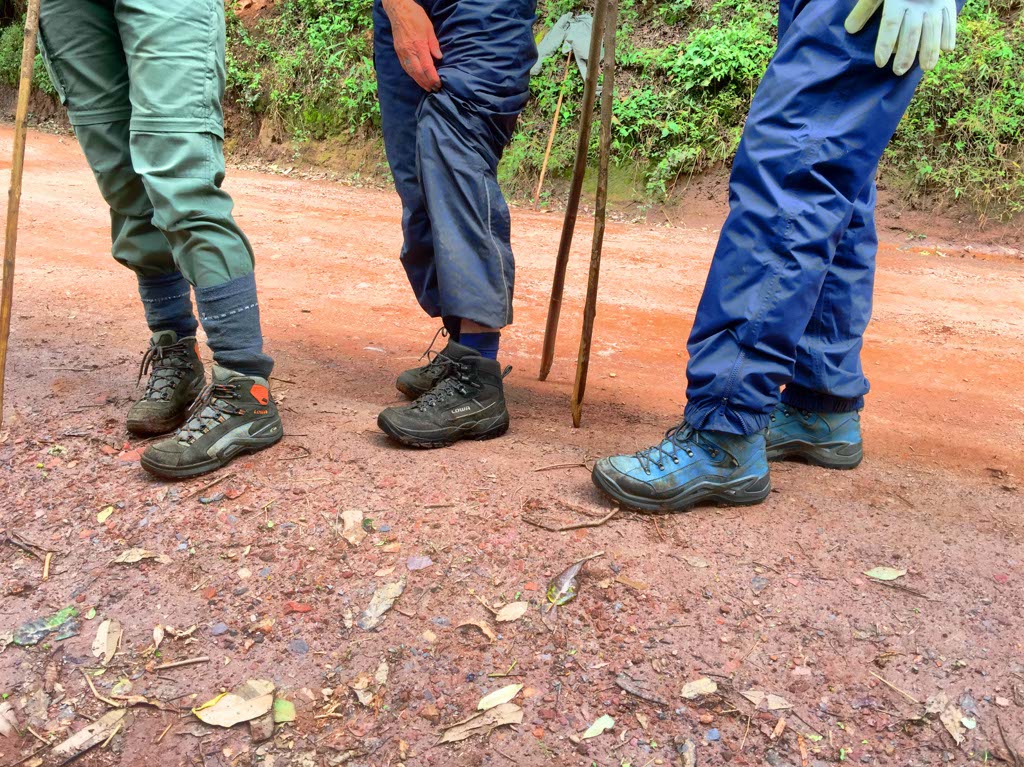
Here’s a breakdown of what to pack for gorilla trekking in Uganda, especially if you’re doing it for the first time.
Clothing: Dress for Jungle Conditions
Uganda’s rainforests are humid, thick, and often muddy. Your clothing should protect you from rain, thorns, and insects while keeping you comfortable during uphill hikes.
Long-sleeved shirt (quick-dry)
Long trousers (preferably waterproof or hiking type)
A lightweight rain jacket or poncho
A warm fleece or sweater (mornings can be cold)
Sturdy, waterproof hiking boots
Long socks (tuck trousers in to avoid ants)
Gaiters (optional, for better leg protection)
Accessories & Essentials
Gardening gloves (for grabbing onto vegetation or rough branches)
Wide-brim hat or cap (for sun protection)
Sunglasses
Reusable water bottle or hydration pack (minimum 1.5 liters)
High-energy snacks (trail mix, bars, nuts)
Insect repellent (with DEET for mosquito protection)
Sunscreen (UVA/UVB)
Face mask (mandatory around gorillas)
Small daypack (for water, camera, jacket)
Electronics & Documentation
Camera or phone (no flash allowed)
Power bank
Binoculars (optional, for birders)
Waterproof bag cover or dry sack
Photocopy of passport and gorilla permit (required at the briefing)
Additional Tips
Avoid wearing bright-colored clothing. Stick to earth tones like green, brown, and khaki.
Do not wear camouflage (military-style clothing is discouraged in Uganda).
Carry some cash (UGX or USD) for tips or local purchases at lodges.
Packing the right way can make your Uganda gorilla safari more enjoyable and safe. If you’re traveling during the wet season, prioritize waterproof layers and quick-drying fabrics. If it’s the dry season, don’t underestimate the chill of early mornings in the highlands.
Physical Fitness and Difficulty of Gorilla Trekking in Uganda
One of the most frequently asked questions is: How difficult is gorilla trekking in Uganda? The short answer: It depends on your fitness level, the gorilla family you’re assigned to, and the terrain conditions on your trekking day.
What Makes Uganda Gorilla Trekking Challenging?
Uganda’s gorilla trekking happens mainly in Bwindi Impenetrable National Park and Mgahinga Gorilla National Park, both located in mountainous regions with dense forest. The name “Impenetrable” is not just for effect — expect steep climbs, thick vegetation, muddy paths, and uneven ground.
Trek duration: 30 minutes to 6+ hours (average 2–4 hours one way)
Altitude: 1,160 to over 2,600 meters above sea level
Slippery trails: Especially during rainy months
Humidity: The rainforest climate can make hikes feel more intense
Do You Need to Be Very Fit?
You don’t need to be an athlete, but a moderate level of physical fitness is highly recommended. Daily walks, hikes, or stair climbing in the weeks before your trip can significantly help.
Visitors over 50 or with limited mobility can request allocation to a nearer gorilla family (though it’s not guaranteed). Porters are also available at the park headquarters and can carry your backpack or even assist you physically on tough sections.
Tips to Handle the Trek More Comfortably
Start training early: Walk uphill, do squats, or hike with a daypack before your trip.
Hire a porter: It’s affordable and helps the local community.
Use trekking poles: These make a big difference on steep or muddy sections.
Pace yourself: There are regular stops to catch your breath.
Stay hydrated and fueled: Bring water and a high-energy snack.
Trekking in Bwindi vs Mgahinga – Which is Easier?
Bwindi Impenetrable Forest has more gorilla families but steeper, denser trails.
Mgahinga Gorilla Park has more open bamboo forest and gentler slopes, though only one habituated gorilla family.
So if you want a less intense trek, you might consider Mgahinga Gorilla Trekking or requesting an easier route in Bwindi.
Final Thought
Gorilla trekking in Uganda is not a walk in the park, but it’s doable for most reasonably fit travelers. The moment you lock eyes with a mountain gorilla in the wild, the mud, sweat, and climbs are forgotten. It’s a physical and emotional journey worth every step.
Need help choosing the right gorilla trek for your fitness level? Talk to our safari experts
Responsible & Ethical Gorilla Trekking in Uganda
At Jewel Gorilla Safaris, we believe gorilla trekking in Uganda should not only be thrilling but also ethical. Every encounter with these endangered giants carries a responsibility — to protect them, preserve their habitat, and ensure the communities living around them benefit too.
Why Ethics Matter in Gorilla Tourism
Mountain gorillas are critically endangered and share over 98% of our DNA. That closeness makes them vulnerable to human diseases, stress, and disruption. Uganda has become a model for ethical gorilla tourism, with strict regulations set by the Uganda Wildlife Authority (UWA) to balance conservation and tourism.
Gorilla Trekking Rules That Protect the Gorillas
Whether you’re trekking in Bwindi Impenetrable Forest or Mgahinga Gorilla National Park, your guide will brief you on the official gorilla rules. These include:
Keep a minimum distance of 7 meters from the gorillas at all times.
No flash photography is allowed.
Masks are mandatory to prevent transmission of human disease.
Do not trek if you are sick or showing flu-like symptoms.
Visits are limited to 1 hour once you find the gorilla family.
A maximum of 8 visitors per group per day is allowed.
Stay quiet, avoid sudden movements, and never touch the gorillas.
These rules are not just formalities — they’re the foundation of responsible gorilla trekking in Uganda.
Community-Based Tourism
Ethical gorilla tourism goes beyond the forest. Your permit fee (currently $800 per person) helps fund ranger salaries, anti-poaching patrols, gorilla research, and local community development. In Uganda, a portion of gorilla permit revenue is reinvested into the neighboring communities, supporting schools, health centers, and clean water projects.
When you book your Uganda gorilla safari with us, you directly contribute to:
Sustainable livelihoods for locals through employment
Porter programs that support ex-poachers and youth
Craft markets and cultural visits that empower women and families
Eco-Friendly Safari Practices
At Jewel Gorilla Safaris, we go the extra mile to reduce our ecological footprint:
We work with eco-lodges and camps that follow green principles.
We provide reusable water bottles on request.
Our safaris are low-impact, plastic-free, and carbon-aware.
Your Role as a Traveler
Travelers have a powerful role to play. By choosing ethical gorilla safaris in Uganda, following guidelines, and supporting conservation-minded operators, you become part of the long-term solution for gorilla survival.
Want to trek responsibly and leave a positive impact? Book an ethical gorilla trekking safari with us
Gorilla Habituation Experience in Uganda
For those who want more than a brief encounter, Uganda offers a unique gorilla habituation experience, available only in the Rushaga Sector of Bwindi. This experience allows you to spend up to 4 hours with a semi-habituated gorilla group — far more than the usual 1-hour limit.
Key differences between standard trekking and habituation
| Feature | Standard Gorilla Trekking | Gorilla Habituation Experience |
|---|
| Time with gorillas | 1 hour | 4 hours |
| Group size | Maximum 8 visitors | Maximum 4 visitors |
| Cost | $800 per permit | $1,500 per permit |
| Purpose | Observe fully habituated gorilla families | Join researchers in habituating wild gorilla families |
| Difficulty | Moderate to high | Often more challenging due to unhabituated behavior |
Is the Habituation Experience Worth It?
Absolutely — if you’re a photographer, wildlife enthusiast, or simply want more time observing natural behavior, the gorilla habituation experience in Uganda offers an unmatched level of immersion. You witness the subtle communication, feeding habits, and daily life of gorillas as they slowly grow used to human presence.
Choosing Your Trek Based on Family Group
- Looking for easier access? Choose Rushegura or Mubare in Buhoma.
- Want a challenge and stunning views? Try Nkuringo.
- Interested in rare twins or playful juveniles? Ask about Oruzogo or Nshongi.
Our team helps you select the best family for your fitness level, location, and interests.
Curious about which gorilla family suits your adventure? Speak with our experts to customize your trek.
Where to Stay for Gorilla Trekking in Uganda
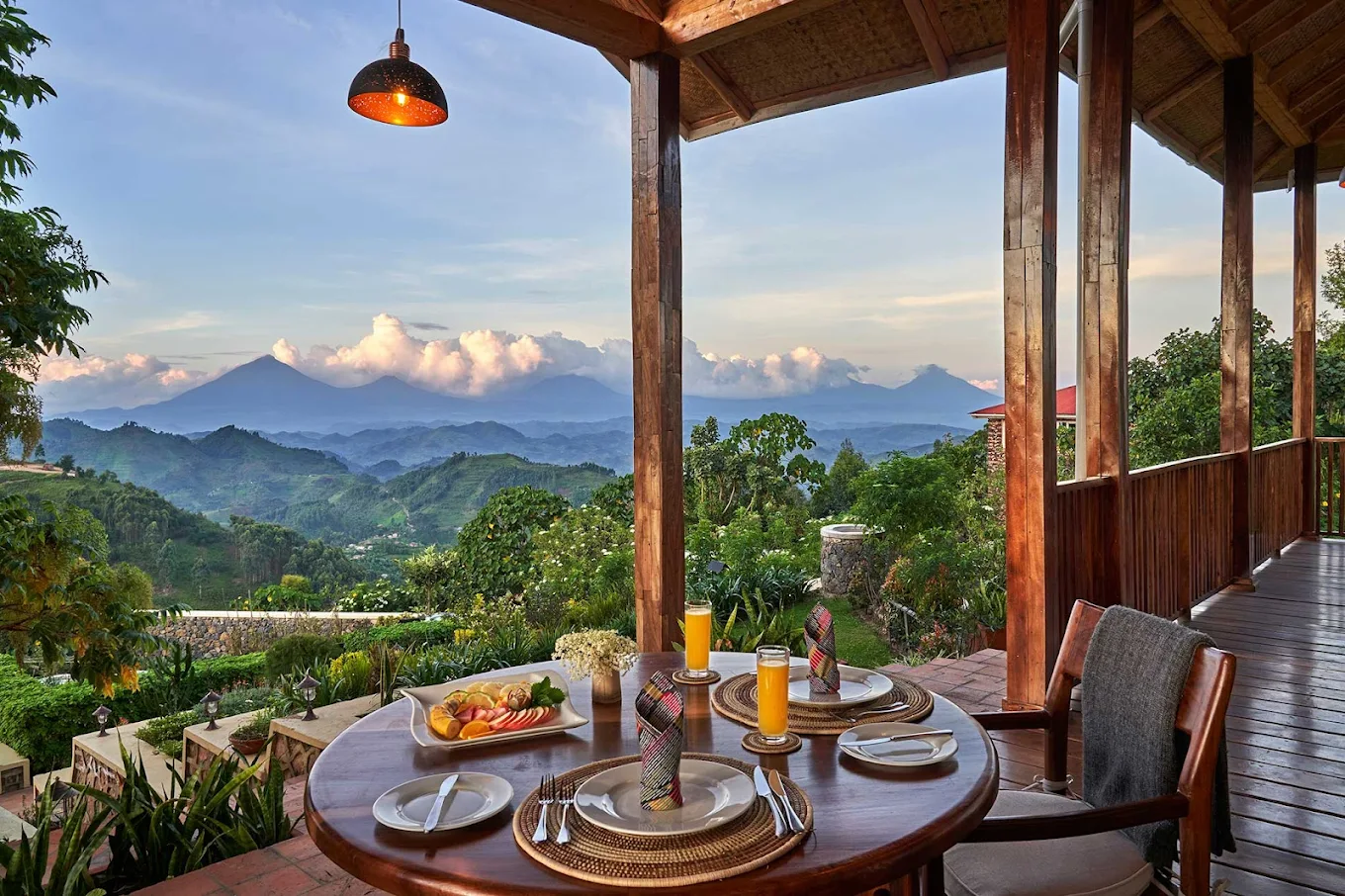
Choosing the right accommodation is a key part of planning your Uganda Gorilla Safari. Whether you’re seeking a budget-friendly guesthouse, a comfortable midrange lodge, or an exclusive luxury forest retreat, Uganda offers a wide range of lodges near Bwindi Impenetrable National Park and Mgahinga Gorilla National Park to suit every traveler and budget.
Most gorilla trekking accommodations are located near the four main sectors of Bwindi: Buhoma, Ruhija, Rushaga, and Nkuringo, as well as in Ntebeko near Mgahinga.
Below is a helpful guide to the best gorilla trekking lodges in Uganda by category:
Lodges & Camps Near Bwindi and Mgahinga
| Lodge Name | Sector | Category | Key Features |
|---|
| Buhoma Community Rest Camp | Buhoma | Budget | Simple bandas, walking distance to park HQ, great for budget trekkers |
| Rushaga Gorilla Camp | Rushaga | Midrange | Comfortable cottages, great views, good access to Rushaga trailheads |
| Ichumbi Gorilla Lodge | Rushaga | Midrange | Spacious rooms, eco-conscious design, close to tracking start point |
| Gorilla Safari Lodge | Rushaga | Luxury | Private chalets, full-board meals, spa treatments, forest views |
| Nkuringo Bwindi Gorilla Lodge | Nkuringo | Luxury | Stylish cottages, guided walks, high-end service, panoramic views |
| Lake Mulehe Gorilla Lodge | Rushaga / Kisoro | Midrange | Serene lakeside location, canoeing, great stopover for Mgahinga too |
| Traveler’s Rest Hotel | Kisoro | Budget | Historic lodge used by Dian Fossey, ideal for Mgahinga treks |
| Mount Gahinga Lodge | Mgahinga | Luxury | Elegant bandas, volcano views, top-tier hospitality, cultural activities |
Choosing the Right Lodge
- Budget Travelers: Prefer basic bandas or campsites close to the park gates. These offer the essentials without compromising on proximity to the trek.
- Midrange Travelers: Opt for quality lodges with comfort, views, and better meals at a reasonable price.
- Luxury Travelers: Enjoy private cottages, spa facilities, gourmet dining, and premium service in lodges nestled deep in the forest.
Each lodge we recommend is selected based on accessibility, guest reviews, and proximity to gorilla trek starting points. Let us help you match the perfect accommodation with your itinerary.
How to Get to Uganda for Gorilla Trekking
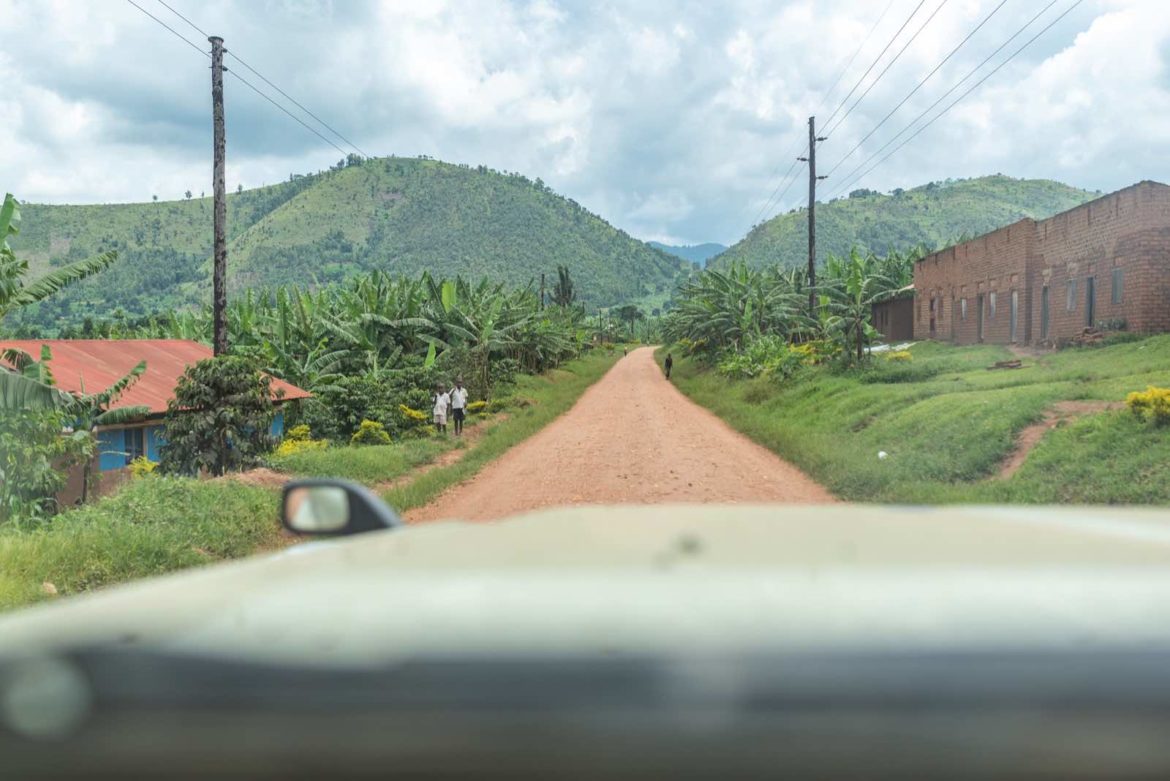
Getting to your Uganda Gorilla Safari is easier than you might think. Uganda is well-connected internationally, and domestic transfers make accessing Bwindi Impenetrable National Park and Mgahinga Gorilla National Park seamless for travelers flying in from abroad or neighboring countries like Rwanda and Kenya.
1. International Airports
Most travelers arrive through one of these two airports:
Entebbe International Airport (EBB): The main entry point to Uganda, located near Kampala, about 9–10 hours’ drive to Bwindi. Entebbe offers daily flights from major global hubs like Istanbul, Doha, Dubai, Amsterdam, Nairobi, and Addis Ababa.
Kigali International Airport (KGL): Located in Rwanda, Kigali is just 4–5 hours’ drive to Bwindi’s southern sectors (Rushaga and Nkuringo). It’s a popular entry for travelers looking for shorter road journeys.
2. Domestic Flights in Uganda
Travelers who want to avoid long drives can opt for domestic flights with local operators such as Aerolink Uganda or Bar Aviation, which offer scheduled services to:
From the airstrip, we organize private 4×4 transfers to your lodge or trek starting point.
3. Road Transfers (Private or Group)
For adventurous travelers, overland travel offers scenic beauty and cultural encounters:
Our team at Jewel Gorilla Safaris provides comfortable, air-conditioned 4×4 vehicles with experienced English- or German-speaking guides. All road transfers include bottled water, rest stops, and sightseeing options upon request.
4. Self-Drive Option
For independent travelers, Uganda has growing options for self-drive safaris. Roads to Bwindi and Mgahinga are now well-marked, though 4×4 vehicles are still required. Jewel Gorilla Safaris also provides rental vehicles with or without a driver for added flexibility.
Whether you arrive by plane or overland, we ensure your journey to the gorillas is safe, comfortable, and memorable. Our team is ready to coordinate all airport pickups, lodge transfers, and cross-border arrangements if starting from Rwanda.
Is Gorilla Trekking in Uganda Safe?
Yes — Gorilla trekking in Uganda is very safe, thanks to the country’s strong conservation practices, well-trained ranger guides, and political stability in the trekking regions. Uganda has become a top destination for gorilla safaris not only because of its biodiversity and affordability, but also because of its reputation for safe and ethical wildlife tourism.
Why Gorilla Trekking in Uganda Is Considered Safe
Well-Secured National Parks:
All gorilla trekking in Uganda takes place inside Bwindi Impenetrable National Park and Mgahinga Gorilla National Park, which are both protected and monitored by the Uganda Wildlife Authority (UWA).
Armed Ranger Escorts:
Every trekking group is led by armed, trained rangers and trackers who ensure the safety of tourists during the entire experience.
Daily Gorilla Monitoring:
Each gorilla family is monitored daily by trackers, ensuring that they are used to human presence and not agitated or stressed.
Stable Trekking Zones:
Uganda’s gorilla trekking zones — Buhoma, Ruhija, Rushaga, Nkuringo, and Mgahinga — are in peaceful areas with no known security threats. Tourism is a major source of income and protected by local communities.
Medical & Emergency Support:
In case of health issues, many lodges are equipped with first-aid facilities, and helicopter evacuations can be arranged in emergencies.
Health & Safety Guidelines (Uganda Gorilla Trekking Rules)
To protect both tourists and gorillas, you’ll be expected to follow rules such as:
No trekking if you’re sick with flu, cough, or any contagious illness
Maintain a distance of at least 7 meters from the gorillas
No flash photography
No eating or drinking in front of the gorillas
Follow all ranger instructions calmly and respectfully
These rules are designed to prevent disease transmission and ensure non-invasive tourism in Uganda’s forests.
Bottom line: Gorilla trekking in Uganda is extremely safe when done with licensed companies like Jewel Gorilla Safaris, under the protection of expert rangers and local guides. We handle all logistics, ensure health protocols are followed, and provide support throughout your journey.
